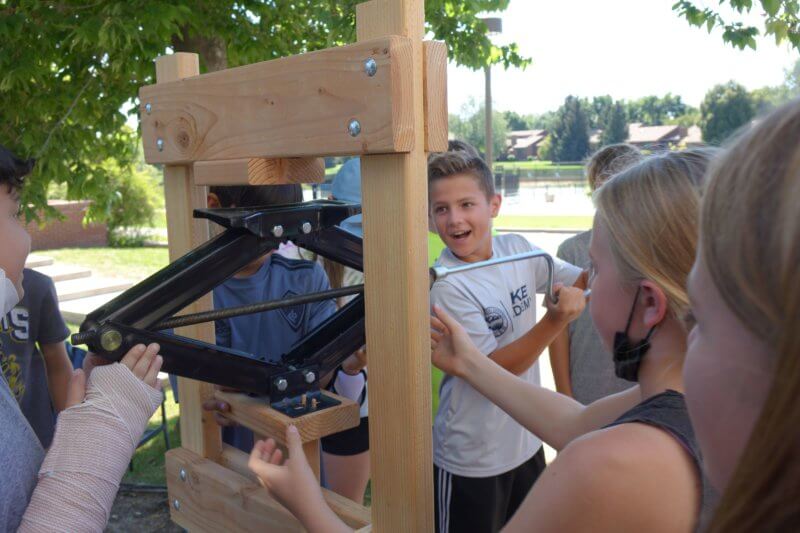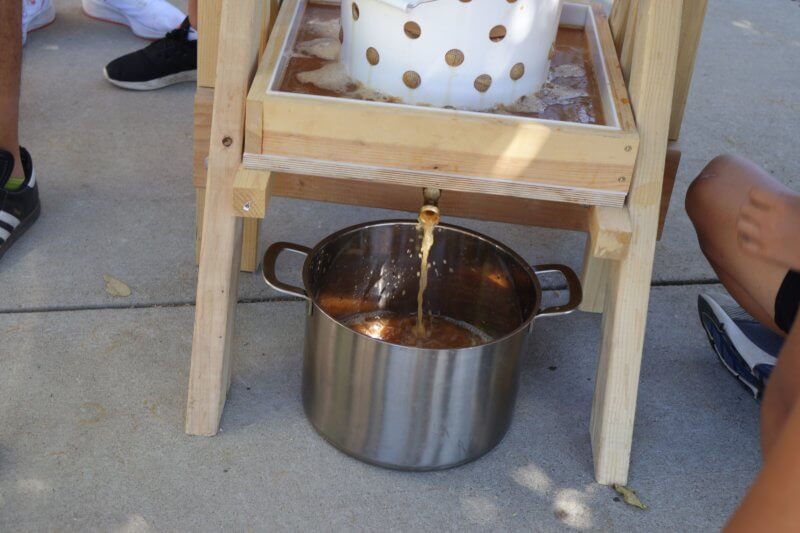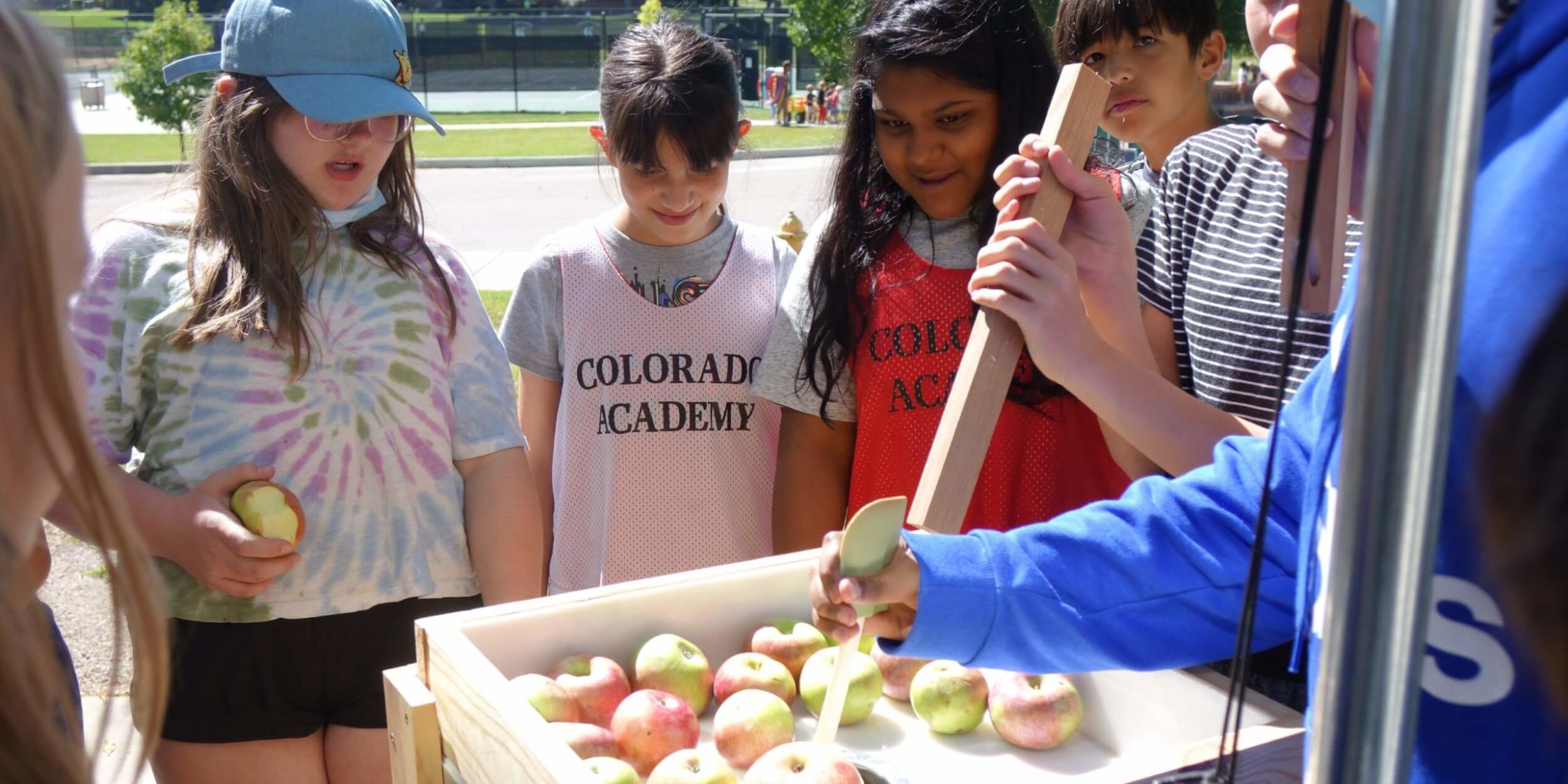Colorado Academy’s apple trees are having a banner year—the sight, smell, and taste of apples are everywhere on campus.
Taking advantage of this year’s bounty, Elisa Stolar and her Grade 6 Core class embarked on a mission to harvest apples and turn them into delicious, hand-pressed cider. Tying the experience to a writing assignment for class, students were asked to think about their favorite fall activities and to express them using vivid, sensory details.
Using rakes, brooms, and special pickers they built themselves, with assistance from CA Operations guru Ian Marzonie, students worked together to bring down the apples. They formed a chain—picking the apple from the tree, tossing it to a classmate, then placing it in a basket. Bruised apples made the cut; wormy apples did not. In less than an hour, the group was able to collect two large laundry baskets of apples.
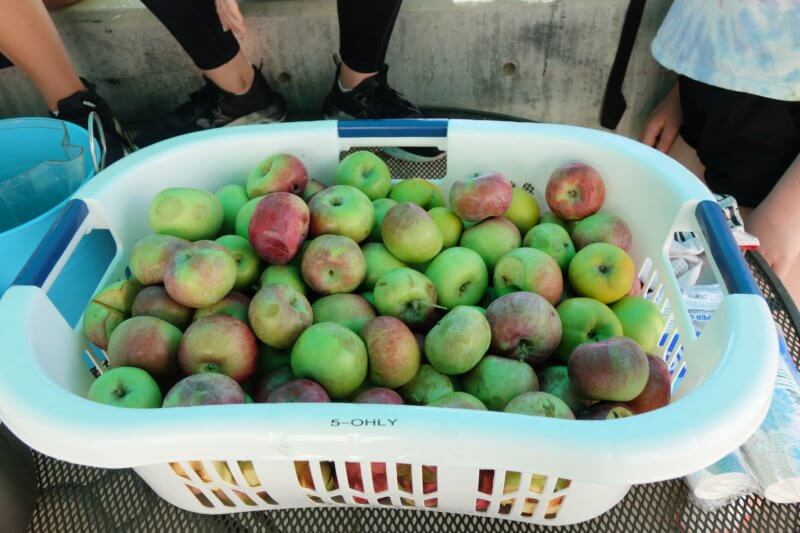
Students then tapped the expertise of Upper School Anderson Innovation Lab director Chris Roads, who taught them how to turn apples into cider. The laborious process involves several steps—pulverizing the apples, wrapping the pulp in cheesecloth, and pressing out the juice.
Under Roads’s engineering, the age-old cider press was reinvented for the modern day—incorporating newer technology like a garbage disposal and a car jack. Students worked in teams to move the apples through the cycle. “My favorite part was using all the cool things to grind up the apples,” says Sixth Grader Della Prior.
Once the apples were processed, students were rewarded with two and a half gallons of fresh cider.
“I learned the simplest things can be complicated to make,” says Sixth Grader Sophia Prall. “But the process and teamwork involved helped my advisory bond.” Her favorite part? Tasting the cider, of course!
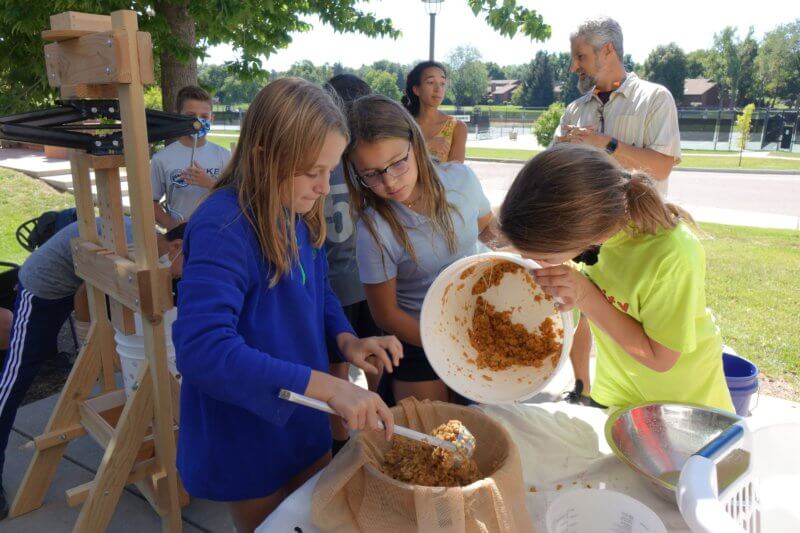
Ms. Stolar was impressed with her students’ cooperation and enthusiasm for the project. “They worked collaboratively to move the apples through the cider-making process, enjoying the sweet fruit of their labors at the end,” she says. “The tangible experience of creating their concoctions helped them get in touch with the sensory details they are using in their writing. They also gained appreciation for the bounties of campus, the intricacies of engineering, and the amount of teamwork it takes to bring a product from start to finish.”
History of CA’s fruit trees
According to Director of Operations Jesse Schumacher, CA has close to 20 apple trees—mostly Galas—scattered throughout campus. Some years, he says, there is not a single edible apple, while other years, like this one, they are large, plentiful, and delicious.
Many trees were planted long ago, but Schumacher has continued to strategically add new ones, and has also planted peach and pear trees.
Second Grade teacher Lizzie Rockmore, whose grandfather Bob Welborn spent summers in the Welborn House, says that there was once a small apple orchard between the main house (Welborn House) and the farmer’s house (now the Smith Center). Adding to that sense of history and place, her son Eli Rockmore, a Sixth Grader in Ms. Stolar’s advisory, was able to use his grandfather’s (Jeff Welborn, son of Bob Welborn) original picker to collect apples for the cider project. Ms. Rockmore says her family still owns their original wooden apple press, circa 1890, that had its beginnings on the property, indicating that the tradition of cider-making at CA dates back more than a century.
